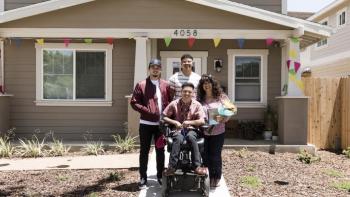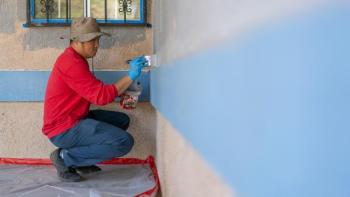A place of her own
Binh was overjoyed to learn that she would partner with Habitat for Humanity Vietnam to design and build a home that would be accessible and have enough space for her and her young daughter to live independently.
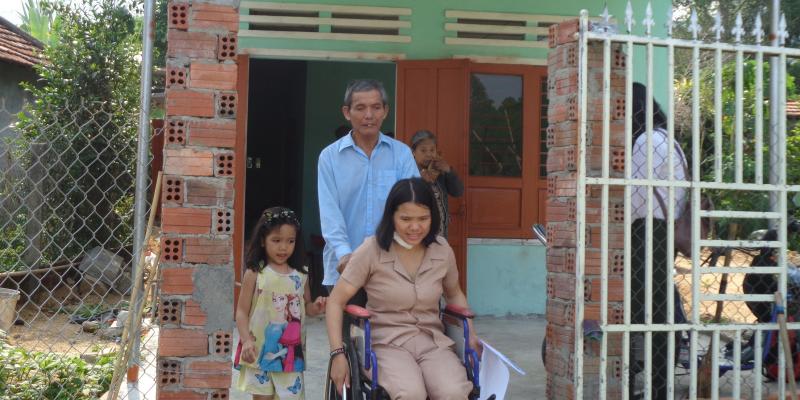
For years, Binh has dreamed of having a place of her own.
After her legs were paralyzed in a serious motorbike accident, Binh’s husband left her, taking their older daughter with him. Binh, pregnant at the time, was devastated, but would begin rebuilding her life. After giving birth to her daughter Giao, she moved in with her parents in Quang Nam province in central Vietnam.
In late 2019, she was overjoyed to learn that she would partner with Habitat for Humanity Vietnam to design and build a home that would be accessible and have enough space for her and Giao to live independently.
Binh began working with the province’s Association for People with Disabilities on a house design suitable for her needs.
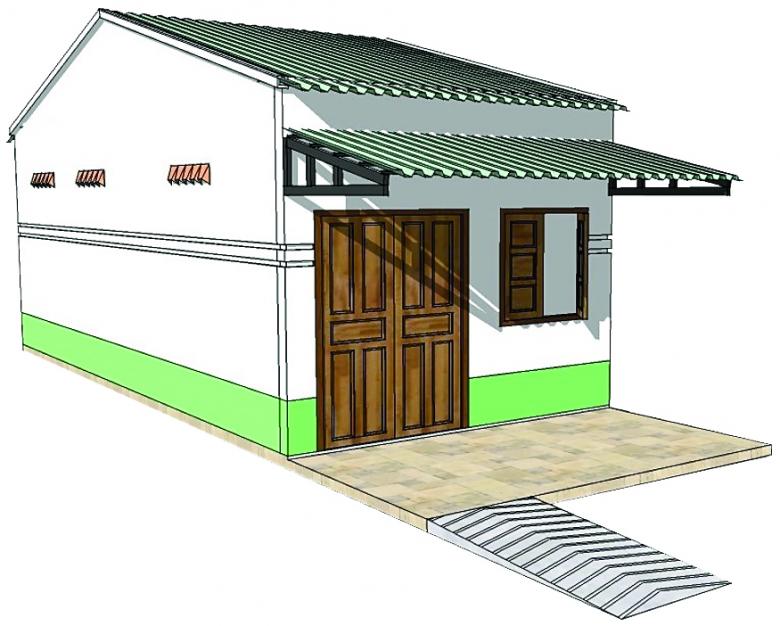
So in early spring 2020, Binh’s heart sank when Vietnam issued a nationwide stay-at-home order to curb the spread of COVID-19. Though she recognized that the pandemic-related restrictions were necessary, Binh also knew it would halt construction and delay her much-anticipated move-in date.
“I was very sad,” Binh says. “We already prepared everything. I even set up the schedule with the masons.” But she kept hope and remained grateful for her supportive community, which had been critical in helping her overcome tough setbacks before. Her spirits lifted when construction resumed on her new home a few months later.
The house includes a gently sloping concrete ramp up to double doors in front, wide doorways throughout, and horizontal grab bars in the bedroom and bathroom to accommodate Binh’s wheelchair.
Now that the mother and daughter have moved in, their quality of life has greatly improved. Binh is relieved that she’s now able to care for herself and can rely less on her elderly mother for help.
Giao, who loves to go out and meet with friends now also wants to spend time at home where she has her own space to study and play. “My daughter is absolutely thrilled about the new house. We’ve been sharing so much laughter and warm moments there,” says Binh.
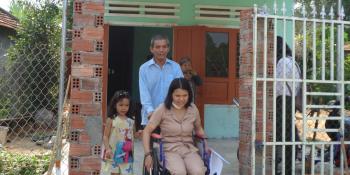
Ring and Habitat for Humanity team up to build safer, stronger communities
ShelterTech accelerators 2020 cohorts announced
Twenty startups and scaleups from South America’s Andean region and Southeast Asia will embark on a journey to improve their products and services as they join the world’s leading platform for affordable housing innovation.
The 2020 State of the Nation's Housing report
This report, released by Harvard University’s Joint Center for Housing Studies and proudly sponsored by Habitat for Humanity, through the Cost of Home campaign, describes key trends in homeownership and rental markets, highlighting how the COVID-19 pandemic and national dialogue around the need for racial justice impact the nation’s preexisting housing challenges.
Habitat for Humanity and Dow pilot carbon mitigation program to make homebuilding more sustainable
ShelterTech Andean Market Landscape – Regional Analysis and Recommendations
This report provides a closer on the entrepreneurial landscape and housing sector in Andean countries. It identifies key local stakeholders, gaps and opportunities in the ecosystem and the key trends in the impact investment space.
ShelterTech Andean Market Landscape – Country Analyses
This study aims to identify the actors supporting the social impact ecosystem in the Andean Region, the opportunities and gaps that exist in addressing the shelter sector needs regarding entrepreneurship and innovation and the effects of the COVID-19 health crises on the shelter sector.
Impact Entrepreneurial Ecosystem in Southeast Asia – A ShelterTech Accelerator Scoping Study
Years of consistent economic development has sparked a growth in entrepreneurship across Southeast Asia. With this backdrop, ShelterTech can play a key role in bringing the right expertise and support to early-stage shelter enterprises so they can scale their models to meet the unmet needs of low-income households.
